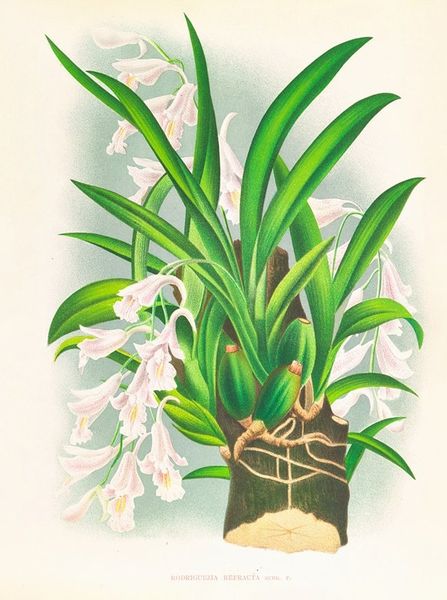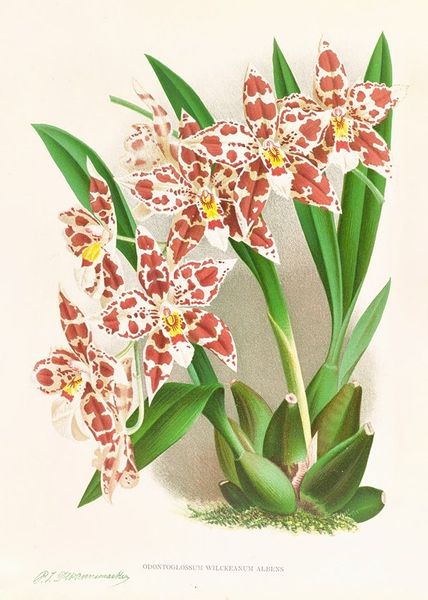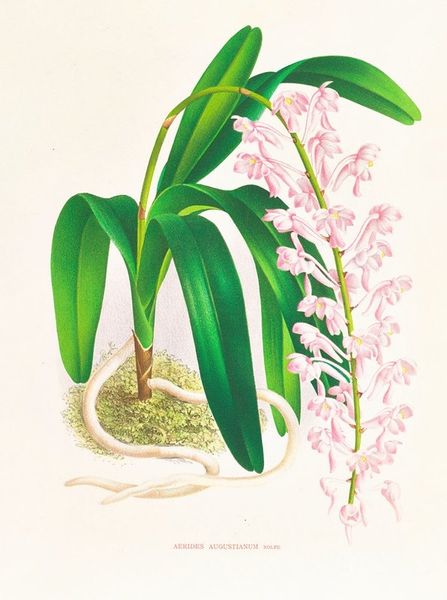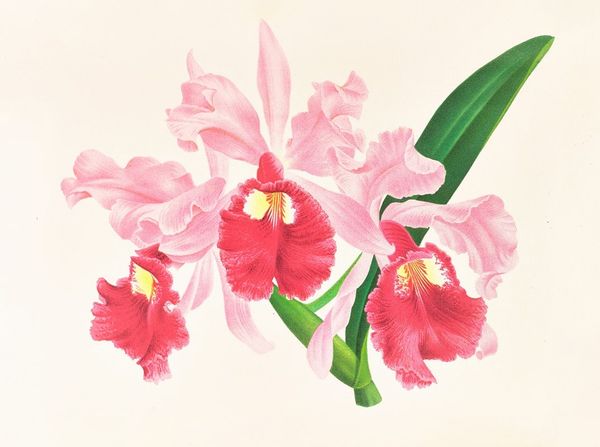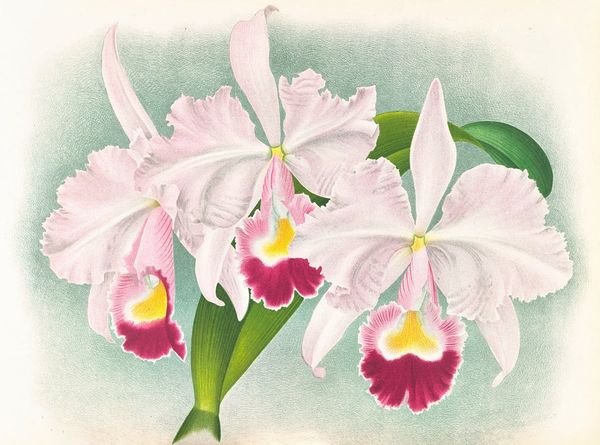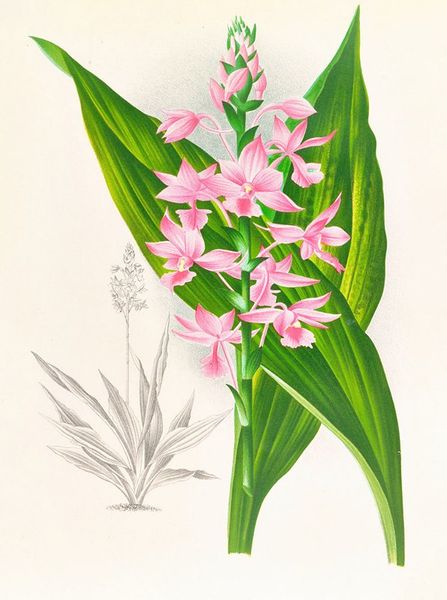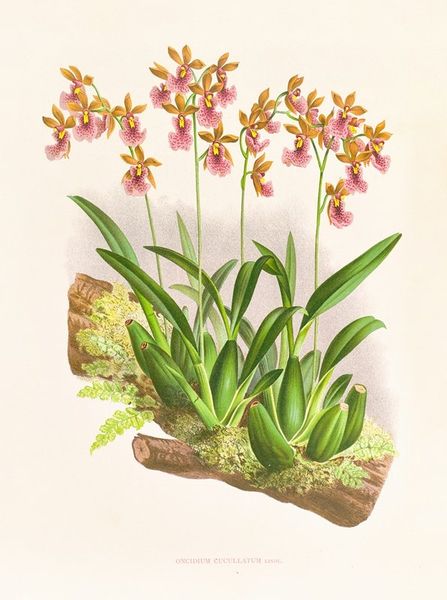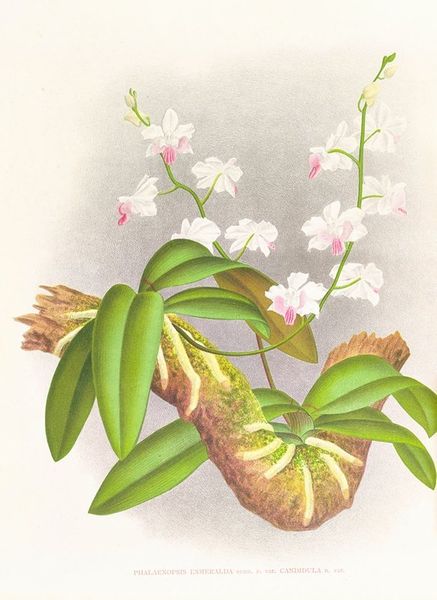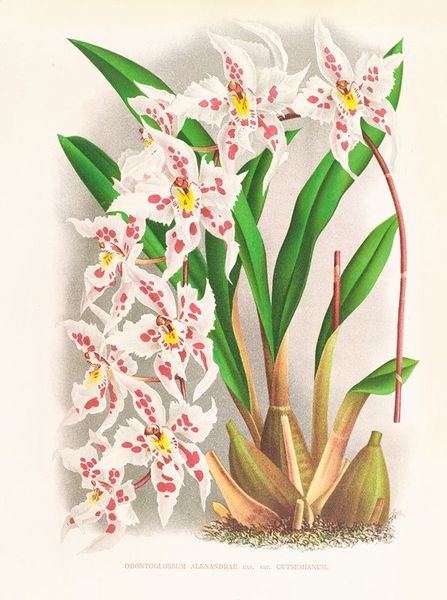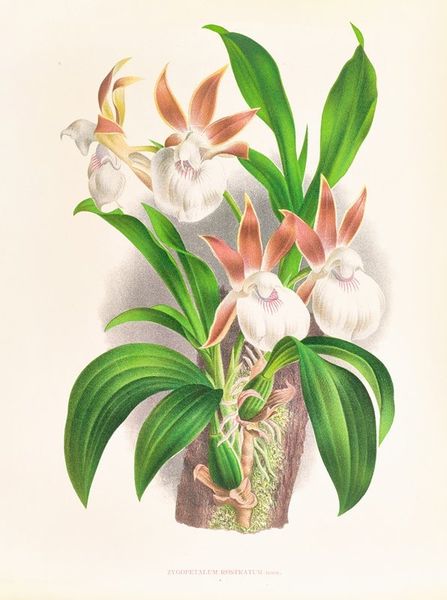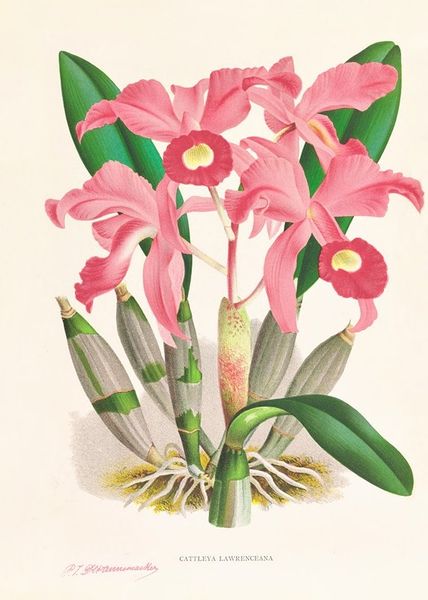
watercolor
#
watercolor
#
watercolour illustration
Copyright: Public Domain: Artvee
Editor: So, this is Jean Jules Linden’s *Aerides maculosum*, a watercolor illustration dating between 1885 and 1906. It’s such a precise rendering, and the leaves look incredibly vibrant. What draws your eye when you look at this work? Curator: It's the implied labor, really. Consider the conditions: late 19th century, the rise of industrialized printing yet here we have meticulously hand-painted illustration. This orchid becomes a commodity viewed through a scientific lens. It speaks volumes about colonial botanists, expeditions, and the movement of plants. Editor: That’s fascinating! So, the painting is about more than just the flower itself? Curator: Precisely. It's about the entire network surrounding it. Who commissioned this? For what purpose? Was it purely scientific, or was there an element of prestige involved? Watercolour itself—its accessibility and reproducibility—plays into a democratisation of scientific knowledge, yet contrasts with the elitist associations of orchid collecting at the time. Editor: I hadn't considered that tension. The accessibility of the medium versus the exclusivity of the subject. Curator: Indeed. Notice how the focus is almost clinical in its exactitude. This isn't romantic flower painting; it’s documentation, packaged within a system of power dynamics of trade, collecting, and knowledge production during that era. What seems purely botanical is entwined with political and social undertones. Editor: I never would have thought of it that way, but understanding the social context and production helps me to see it in a whole new light. Thank you! Curator: My pleasure. Reflecting on the labor and social conditions opens our eyes to untold aspects of its production and meaning.
Comments
No comments
Be the first to comment and join the conversation on the ultimate creative platform.


